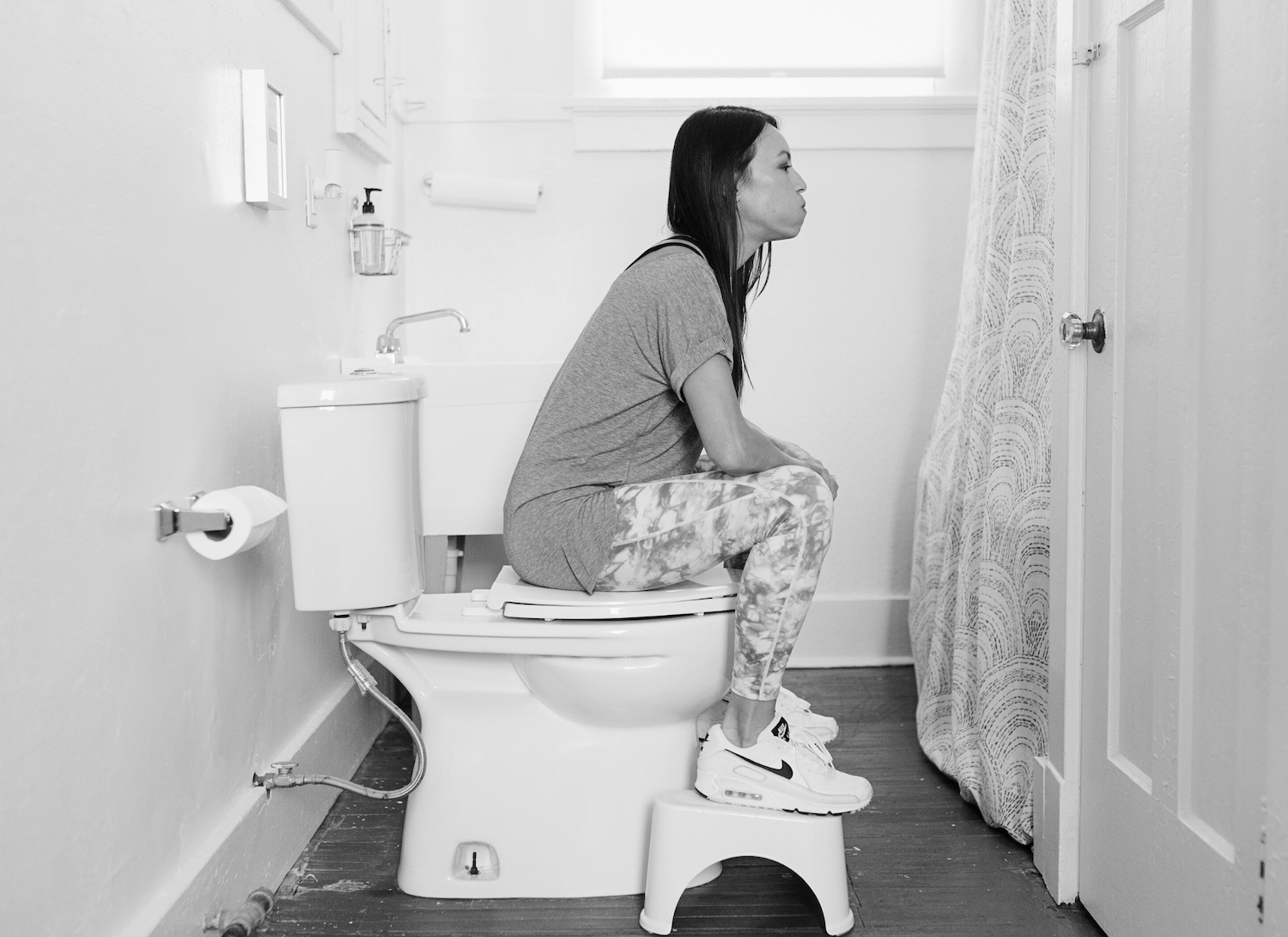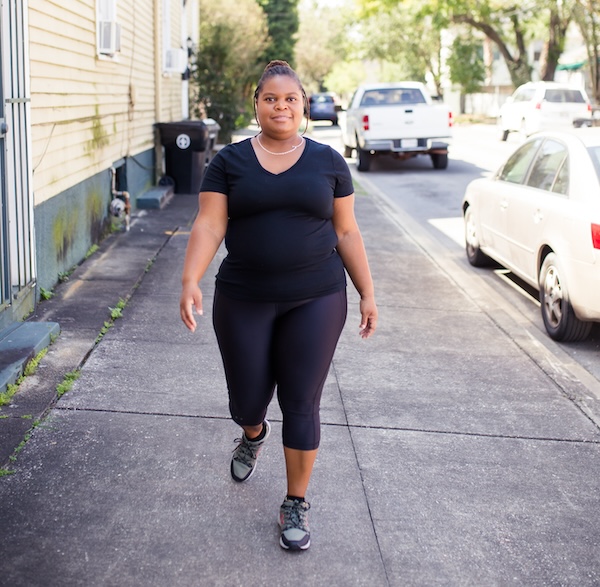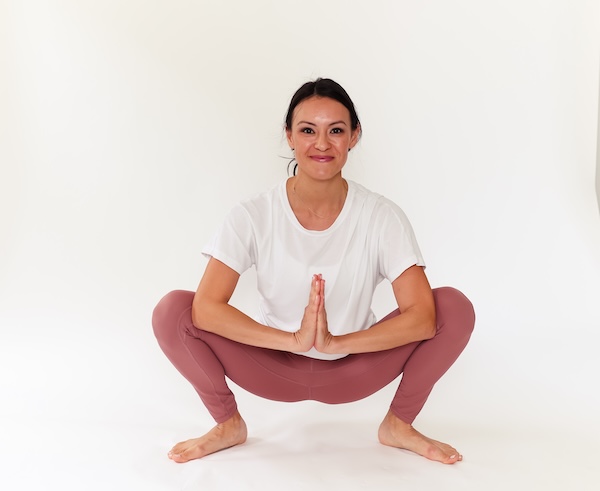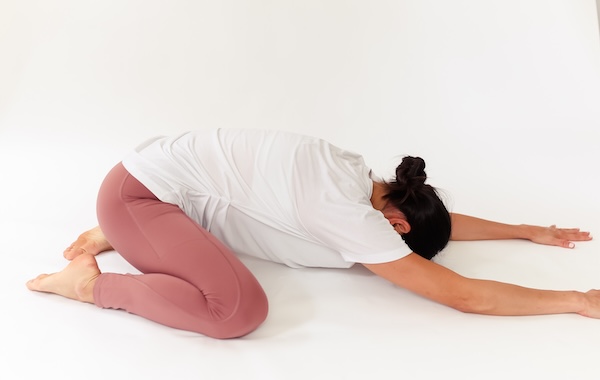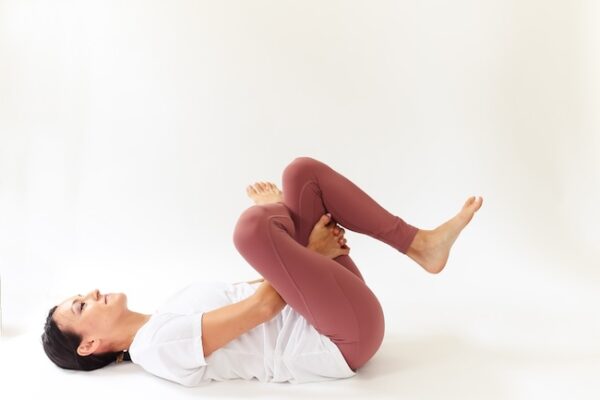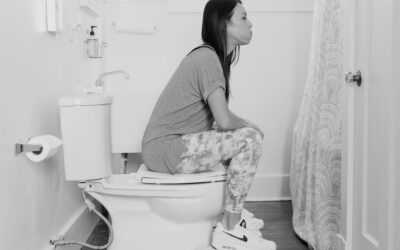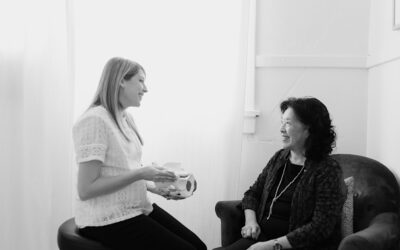Constipation is a real pain in the…well…you know.
And while plenty of people assume that constipation is caused exclusively by food, there’s a lot more happening down there than you might expect. In fact, you can often blame the pelvic floor for all that struggling and straining.
Constipation happens when we have problems pooping. Signs and symptoms of constipation can be variable but generally include:
- Less than three bowel movements in a week
- Feeling like you haven’t fully emptied
- Increased straining when pooping
- Bloating, nausea, and general abdominal discomfort
Constipation and Your Pelvic Floor
Constipation is often a symptom of an overly tight, or hypertonic, pelvic floor.
A coordinated pelvic floor can “let go” of stool as the muscles appropriately lengthen and relax. But when the pelvic floor is hypertonic, it can’t relax and coordinate the muscles necessary for an easy and successful bowel movement.
Pelvic organ prolapse (POP)—another kind of pelvic floor dysfunction–can also make complete emptying harder. This is because of the general weakening of the muscles necessary to support the bowel and rectum.
Pregnancy can also make #2s a nightmare. Pregnant women tend to experience constipation due to increased progesterone, the growing uterus, and an increase in iron intake (like in prenatal vitamins).
5 Pelvic Floor Exercises for Constipation
Moving your body, with special attention to relaxing your pelvic floor and core, can help to relieve constipation.
Here are a few pelvic floor exercises for constipation relief to get you started!
#1 Walking
Movement is a great way to stimulate gut motility. And it can be as easy as walking! The ideal scenario is walking 20-30 minutes, 3-4 times/week.
#2 Abdominal I-L-U Massage
Lie on your back. Starting on the lower right side of your belly, apply gentle pressure as you move your hand up in a straight line toward your right rib cage, forming an I shape. Repeat 10 times.
Then, apply the same pressure while running your hand in a straight line across the top of your belly from right to left. When you reach your left side, extend the line down toward your left hip, forming an L shape. Repeat 10 times.
Finally, start at your hip bone on your right side and gently apply pressure as you move upward. Go across the top of your belly and then down to your left hip again to create an inverted U path. Repeat 10 times.
#3 Deep Squat Stretch
Stand with your feet slightly wider than your hips. Point your toes slightly outward, and slowly bend your knees and push your bottom back, as if you’re about to sit down.
As you squat, put your elbows on the inside of your thigh, press your palms together, and imagine pulling your belly button toward your spine. Your heels can be flat on the floor, or you can place a rolled towel or yoga mat under your heels for more support.
Hold the pose for five slow breaths, then slowly rise.
#4 Child’s Pose
Kneel on the floor. Touch your big toes together and spread your knees wider than your hips. Rock your hips backward onto your heels and stretch your arms forward. Exhale and move your torso closer to the ground.
Hold the pose for 5-10 breaths.
#5 Figure 4 Pose
Lie down on your back with knees bent and feet hips width apart. Raise your right leg, bending your knee. Place your right ankle on your left thigh. Bring your left knee toward your chest and you will feel a stretch deep in your right buttock.
Hold for several breaths, then repeat on the left side.
3 Ways to Prevent Constipation
Of course, it’s a whole lot more fun to prevent constipation than it is to manage it. Fortunately, there are some simple things you can do to keep those BMs moving.
#1 Hydrate, hydrate, hydrate.
When the body doesn’t have enough water, poop can become extremely hard and dry. This makes it more difficult to fully pass your BMs. Drinking plenty of water keeps those movements nice and soft.
A good guideline is to drink about half your body weight in ounces of water per day. You’ll know you’re getting enough when your pee is pale yellow (almost clear) and your poops are easier to pass.
#2 Check your nutritional needs.
Fiber is an important piece of the constipation puzzle because it helps bulk up poops and make them easier to pass. Increasing fiber with whole, natural food sources like fresh fruits, veggies, beans, seeds, and whole grains can be a life-saver. Aim for 25-35 grams/day.
Eating less processed food and having smaller meals throughout the day can help the digestive system function properly. So, keep things moving by checking in on your diet! Your behind will thank you.
#3 Try magnesium citrate.
Taking magnesium citrate, like Natural Calm, can improve digestion and make bowel movements softer. Always check in with your doctor before starting a new medication or supplement.
Give your pelvic floor some TLC.
Constipation sucks. Relaxing your pelvic floor can help. And that’s where the V-Hive Relaxation Series comes in! With these curated pelvic floor exercises for constipation, you can stop suffering and start pooping.

